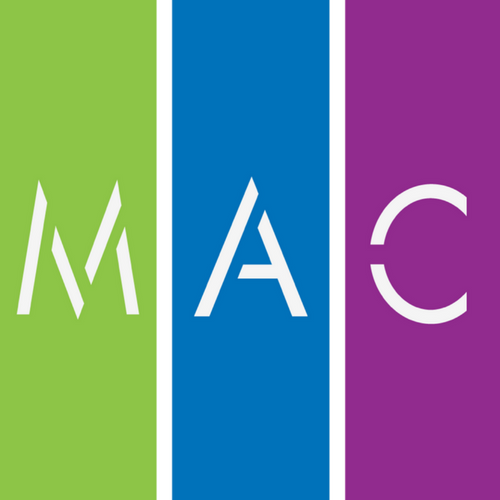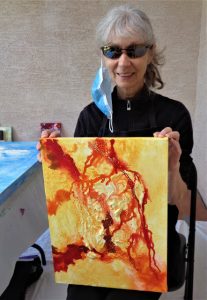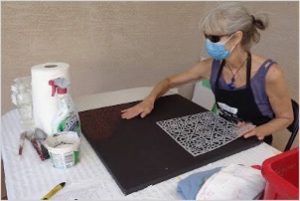FEEL FREE, TOUCH THE ART
Ruth BIEBER
October 28 – November 22, 2025
Opening Reception: Saturday, November 1 1-3pm
As a blind artist, it might come as a surprise to most viewers, that I have a close and treasured relationship with colour. In scientific terms I experience what is known as Charles Bonnet Syndrome. Interested viewers can learn about this phenomenon by simply asking Google, or any of the AI platforms. Alternatively, search for a very popular TED Talks by Oliver Sacks, which features his own experience with CBS. Not all blind people see vibrant colour swirling around them, however it is safe to say, that blind people normally do have a rich sense of haptic. Thus, my goal is to create art that is both pleasing to the eye, as well as to the sense of touch. In short, liven your imagination; feel free; touch the art!
For a more extensive look at CBS, refer to a podcast series on the topic. I am interview #33.
Shaimond Foye
Host, The Charles Bonnet Syndrome Podcast
https://cbsyndromepodcast.com/
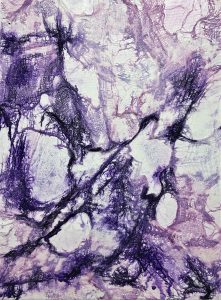
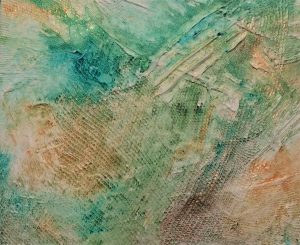
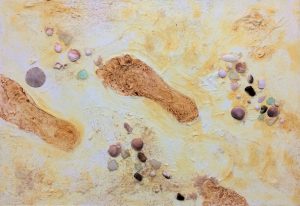
My art is intended to be as interesting to the eye as well as the sense of touch. The viewer is likely to ‘feel’ something, either with the hands, or with the heart, or both.
Traditionally, a theatre artist and artistic director of my own theatre company, I moved to New York City in 2008 and began blind art education by becoming involved with the Art Beyond Sight Institute. Talk about an eye-opening experience. I always loved art, but the idea of becoming an artist seemed out of reach. After all, how can blind people make art? Well, it turns out there are quite a few blind artists, who can in very different ways respond to this question. After I relocated to Kelowna BC in 2010, I curated an exhibition of four blind artists including Busser Howell from NYC, Bruce Horak from Toronto, Eriko Watanabe from Germany and PJ Lockhart from Kelowna. Each of these artists was as diverse as imaginable; just like blind people generally.
While in Kelowna, I also picked up the brush, figuratively speaking, and began painting using a spontaneous art process inspired by art educator Karen Close. Weekly classes were offered at the Rotary Centre for the Arts. Karen is a true artist from the heart. With great gusto, I entered the world of spontaneous art, and then proceeded to enjoy several exhibitions of my own art during my six years in Kelowna. Many of my paintings were independently created, but some were in collaboration with local artists.
My initial goal was to create a body of my own work but also to work with a local Creston artists and have the unique processes of each of the pieces filmed in a ten-minute documentary. Enter award winning videographer Mark Wolfe from Westword Communications. The documentary titled, ‘Do You See What I See?’ was an integral part of the Creston exhibition, and includes description for blind viewers.
Link to video: https://www.youtube.com/watch?v=E8N1NIEc9uc&t=1141s
The exhibition is colourful, with an invitation to ‘feel’ the art, literally and figuratively. There are no warnings of, “Please do not touch the art.“ Artist Win Dinn, who loves colour as much as I do, claims, “We should all, always be allowed to touch the art.” As we painted together, she and I, on average, had up to ten artworks on the go at any given time. Because each layer needed to dry so I could feel the result in order to make another suggestion as to what might come next. Together we created a lot of layers and for both of us the sense of touch became very important.
“‘Working with Ruth has been a creative game changer for me. My love of texture has always been deep, be it visual or actual. However, when we started working together creating a piece while blindfolded altered the way I felt emotionally about texture. The resulting works often incorporated layer upon layer of physical texture, but as I reviewed some pieces with eyes closed, I became aware of how different they were in feel as opposed to when I looked at them. What showed to the eye may have been beautiful, but could become a nightmare to feel without sight involved.
My penchant for feeling artwork – and yes, I’m one of those who would love to sneak my hands over any work of art – has become even more ingrained. I am now engaged in making my creations (presently in art book format) as interesting and enjoyable to the touch as they can be to the eye. Visitors to the studio are encouraged to run their hands over my pieces, and now I have a huge appreciation of how this can impact the viewer if they are truly engrossed in the tactility as well as the contemplation of a work. Making a work of art accessible to those who are not sighted is as important as encouraging them in their own creation of art.” Win Dinn
Artists are people first. Even two artists with very similar creative bents might express themselves very differently, because of their differing personalities and life experiences. This is particularly true when considering the factor of disability.
When considering the artwork itself, viewers were often surprised when they first felt a piece of art with their eyes closed, followed by looking at it with eyes open. The experience can be very different – jarring even. Some people who have normal vision are often preoccupied by wanting a piece of art to look like something. When the art doesn’t ‘look’ like anything representational, the viewer is forced to move into their emotions. Viewers discover that this new layer of perceiving makes for an interesting and more thought provoking viewing experience. Anyone who has lost their eyesight can tell you there are things that are clearer when you cannot see the world through your eyes. Different from sight which enables us to take in what we perceive around us, true vision comes from within and shows us how to navigate the realms of thought, feeling, and emotion by connecting us to the parts of ourselves that exist separately from the world of form.
“What lays beyond the horizon, where we cannot see, fuels the seed of the imagination” – Ruth Bieber
The McMillan Arts Centre is located on the traditional territory of the Coast Salish Nations, home to the Snaw-Naw-As First Nation
and the Qualicum First Nation
